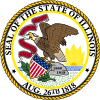Nora, Illinois
Nora | |
|---|---|
 Location of Nora in Jo Daviess County, Illinois. | |
 Location of Illinois in the United States | |
| Coordinates: 42°27′22″N 89°56′42″W / 42.45611°N 89.94500°WCoordinates: 42°27′22″N 89°56′42″W / 42.45611°N 89.94500°W | |
| Country | United States |
| State | Illinois |
| County | Jo Daviess |
| Township | Nora |
| Area | |
| • Total | 0.83 sq mi (2.15 km2) |
| • Land | 0.83 sq mi (2.15 km2) |
| • Water | 0.00 sq mi (0.00 km2) |
| Elevation | 1,014 ft (309 m) |
| Population (2010) | |
| • Total | 121 |
| • Estimate (2019)[3] | 116 |
| • Density | 139.76/sq mi (53.98/km2) |
| Time zone | UTC-6 (CST) |
| • Summer (DST) | UTC-5 (CDT) |
| ZIP Code(s) | 61059 |
| Area code(s) | 815 |
| FIPS code | 17-53195 |
| Wikimedia Commons | Nora, Illinois |
Nora is a village in Jo Daviess County, Illinois, United States. The population was 121 at the 2010 census, up from 118 in 2000.
History[edit]
Nora was named by a railroad official for a female settler.[4] According to another source, the name "Nora" was selected on account of its brevity, Nora being a quite small place.[5]
Geography[edit]
Nora is located at 42°27′22″N 89°56′42″W / 42.45611°N 89.94500°W (42.456072, -89.945113).[6]
According to the 2010 census, Nora has a total area of 0.91 square miles (2.36 km2), all land.[7]
Demographics[edit]
| Historical population | |||
|---|---|---|---|
| Census | Pop. | %± | |
| 1880 | 333 | — | |
| 1890 | 309 | −7.2% | |
| 1900 | 312 | 1.0% | |
| 1910 | 251 | −19.6% | |
| 1920 | 213 | −15.1% | |
| 1930 | 180 | −15.5% | |
| 1940 | 207 | 15.0% | |
| 1950 | 208 | 0.5% | |
| 1960 | 229 | 10.1% | |
| 1970 | 175 | −23.6% | |
| 1980 | 185 | 5.7% | |
| 1990 | 162 | −12.4% | |
| 2000 | 118 | −27.2% | |
| 2010 | 121 | 2.5% | |
| 2019 (est.) | 116 | [3] | −4.1% |
| U.S. Decennial Census[8] | |||
As of the census[9] of 2000, there were 118 people, 53 households, and 31 families residing in the village. The population density was 130.2 people per square mile (50.1/km2). There were 61 housing units at an average density of 67.3 per square mile (25.9/km2). The racial makeup of the village was 100.00% White.
There were 53 households, out of which 20.8% had children under the age of 18 living with them, 50.9% were married couples living together, 5.7% had a female householder with no husband present, and 41.5% were non-families. 39.6% of all households were made up of individuals, and 24.5% had someone living alone who was 65 years of age or older. The average household size was 2.23 and the average family size was 2.84.
In the village, the population was spread out, with 18.6% under the age of 18, 8.5% from 18 to 24, 27.1% from 25 to 44, 24.6% from 45 to 64, and 21.2% who were 65 years of age or older. The median age was 42 years. For every 100 females, there were 84.4 males. For every 100 females age 18 and over, there were 104.3 males.
The median income for a household in the village was $28,125, and the median income for a family was $50,208. Males had a median income of $26,000 versus $23,750 for females. The per capita income for the village was $17,608. There were 14.3% of families and 11.0% of the population living below the poverty line, including no under eighteens and none of those over 64.
Nora Elementary School (mascot Navahos) was a fixture of the town for years. In the early 1980s consolidation led to the school's closure and it was converted to apartments. Until the 1960s the town had a grocery store run by Belle Lutter, who claimed to have ridden Ulysses S. Grant's horse as a girl.
References[edit]
- ^ "2019 U.S. Gazetteer Files". United States Census Bureau. Retrieved July 14, 2020.
- ^ "USGS detail on Newtown". Retrieved 2007-10-21.
- ^ a b "Population and Housing Unit Estimates". United States Census Bureau. May 24, 2020. Retrieved May 27, 2020.
- ^ Chicago and North Western Railway Company (1908). A History of the Origin of the Place Names Connected with the Chicago & North Western and Chicago, St. Paul, Minneapolis & Omaha Railways. p. 107.
- ^ Illinois Central Magazine. Illinois Central Railroad Company. 1922. p. 43.
- ^ "US Gazetteer files: 2010, 2000, and 1990". United States Census Bureau. 2011-02-12. Retrieved 2011-04-23.
- ^ "G001 - Geographic Identifiers - 2010 Census Summary File 1". United States Census Bureau. Archived from the original on 2020-02-13. Retrieved 2015-12-25.
- ^ "Census of Population and Housing". Census.gov. Retrieved June 4, 2015.
- ^ "U.S. Census website". United States Census Bureau. Retrieved 2008-01-31.

No comments:
Post a Comment